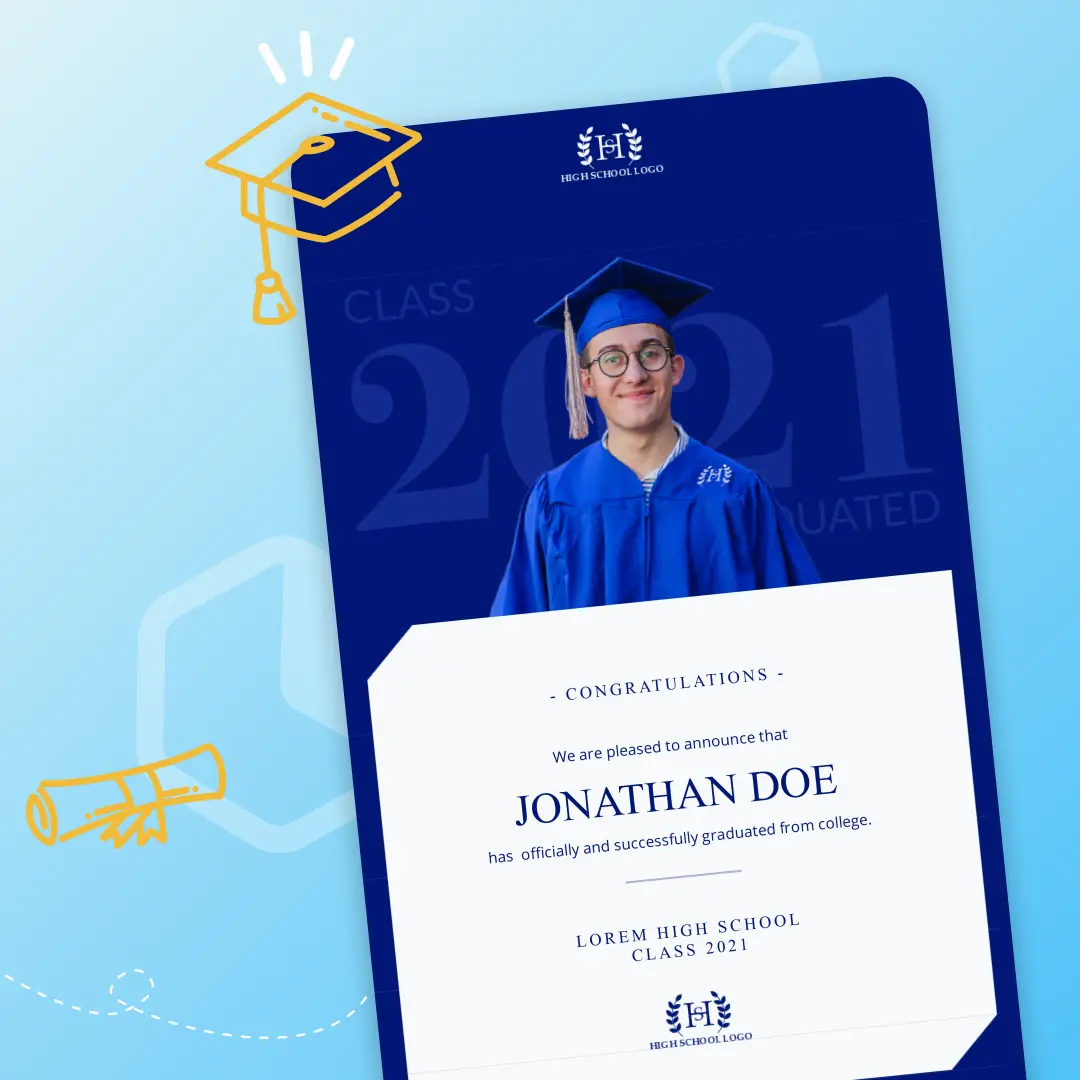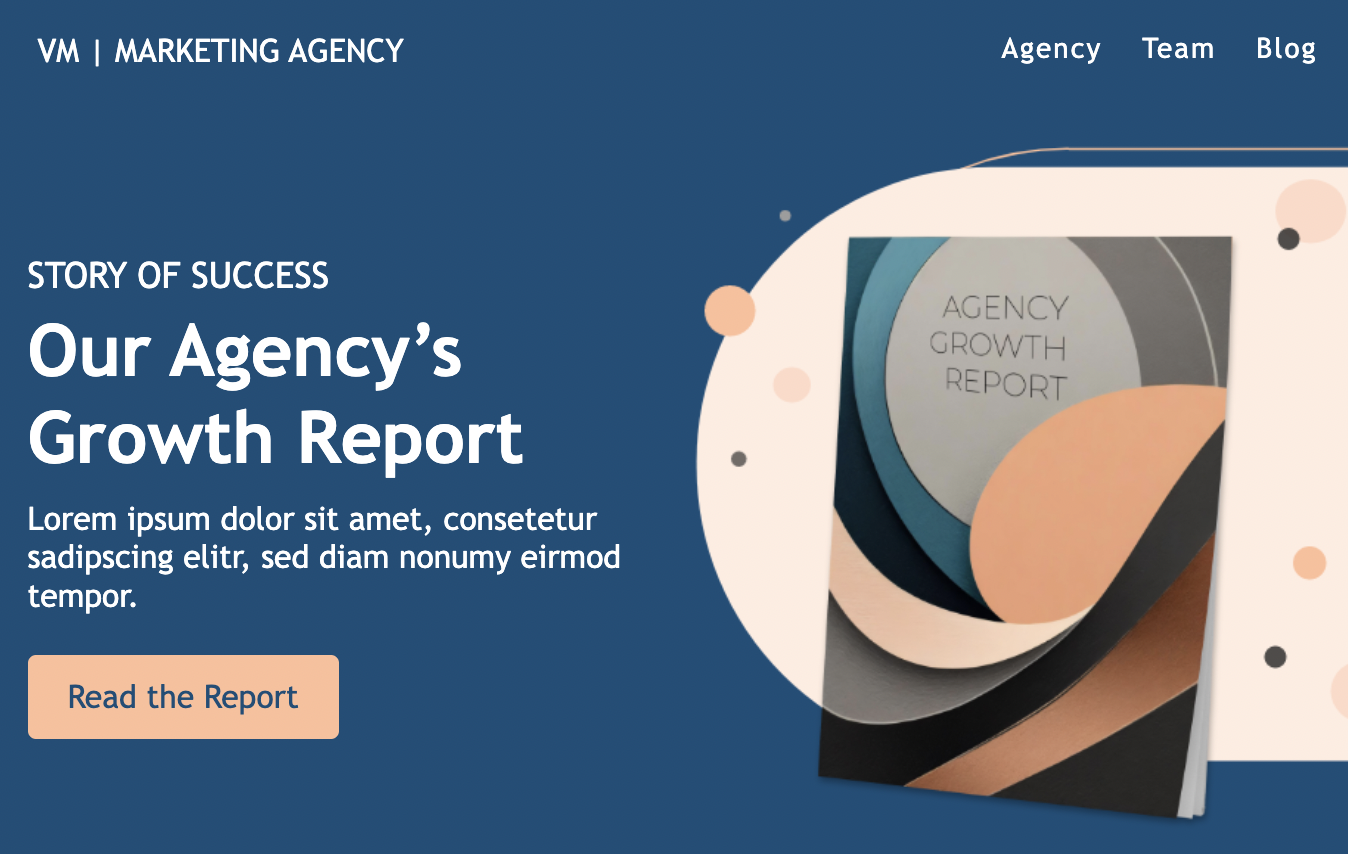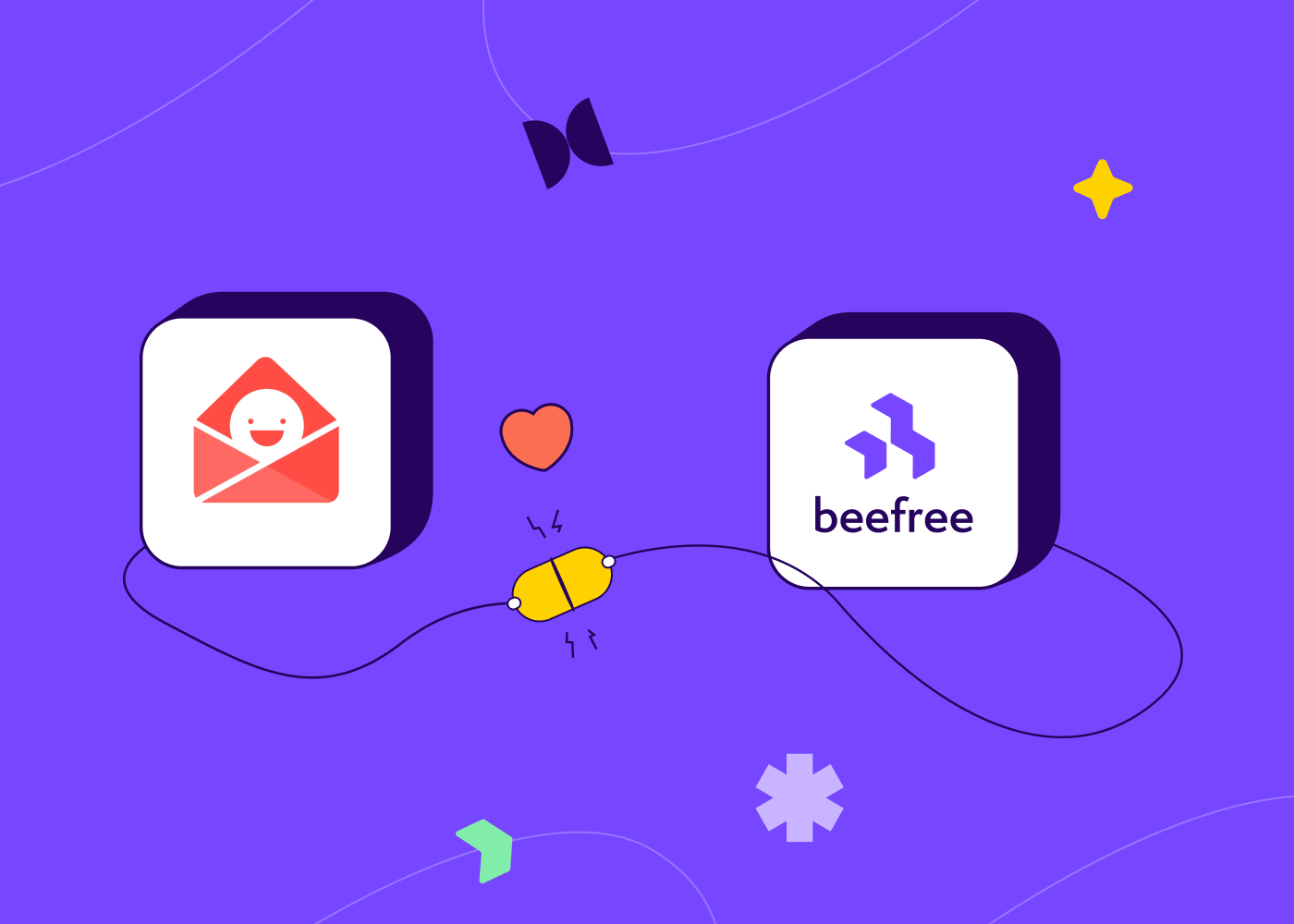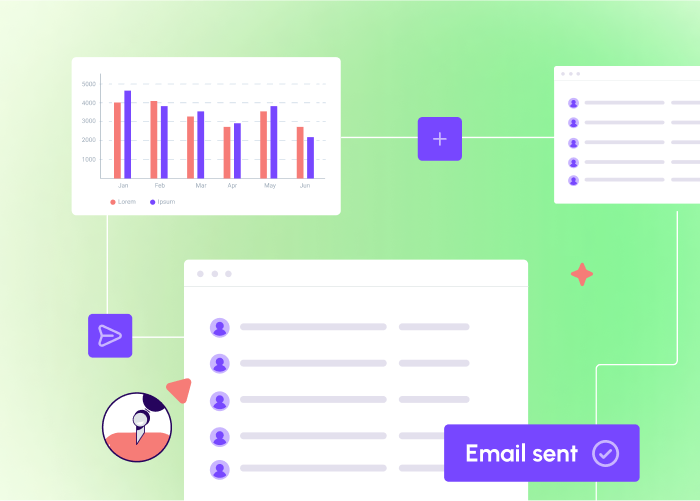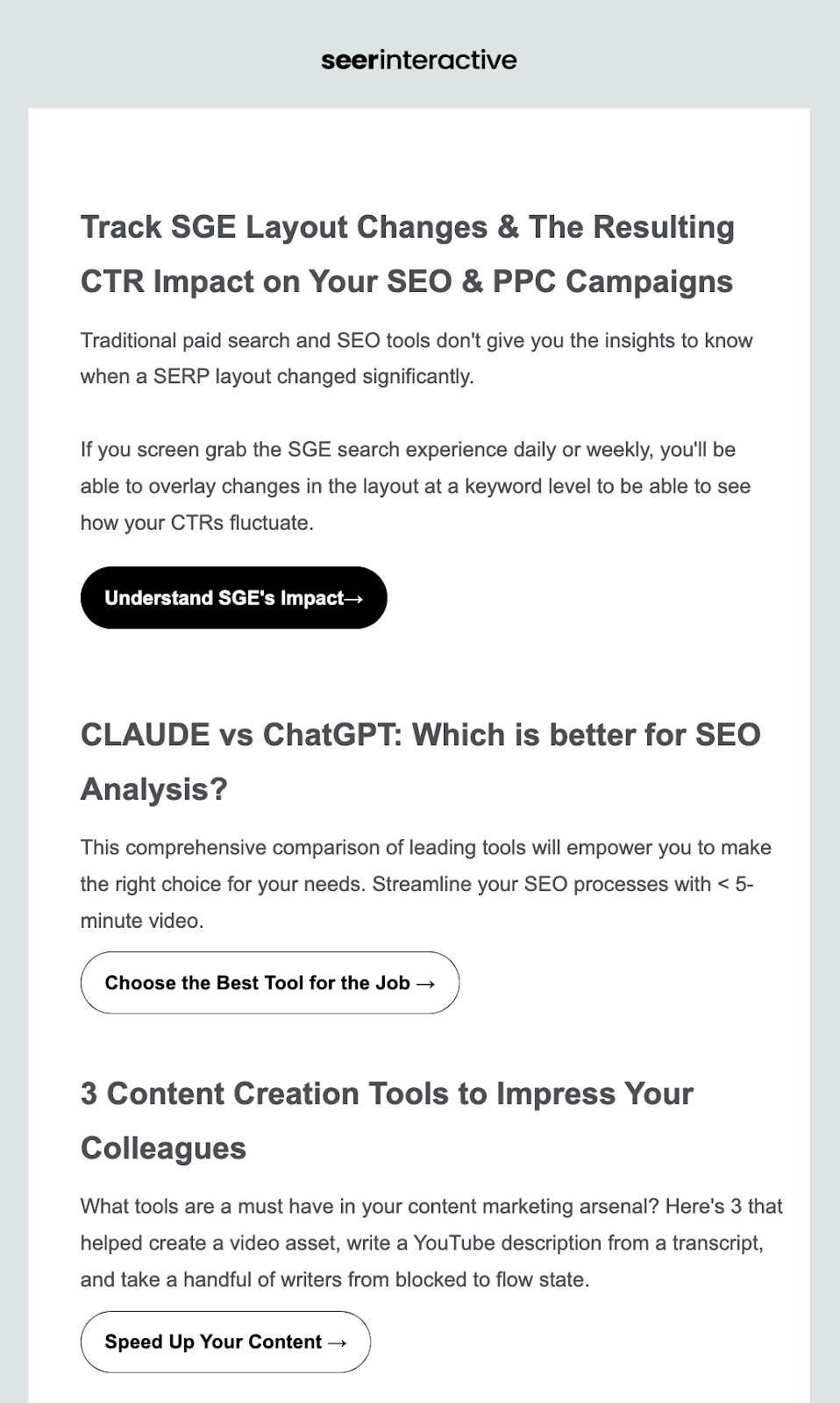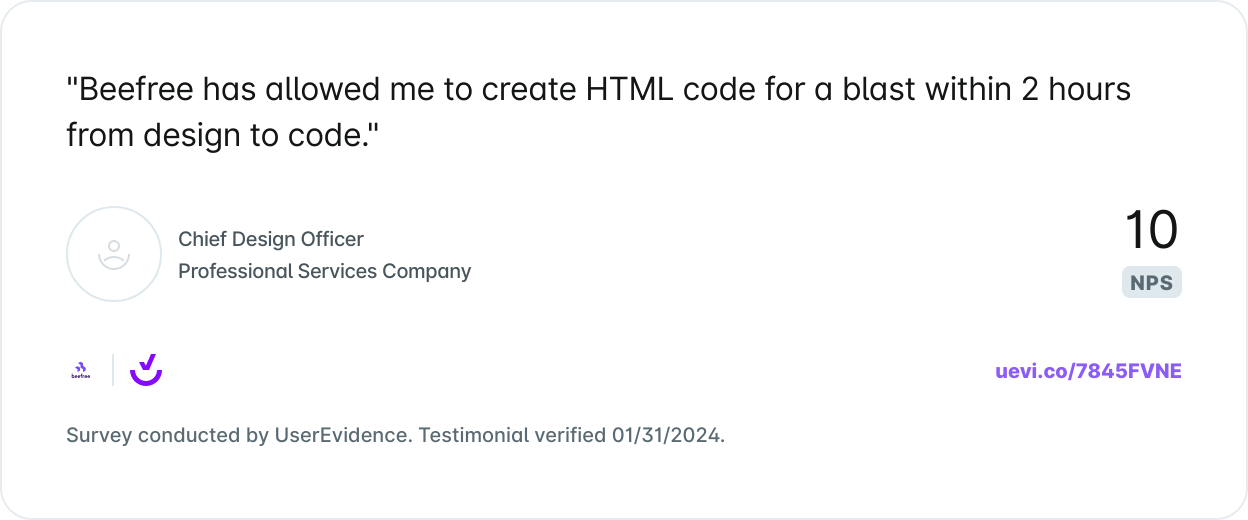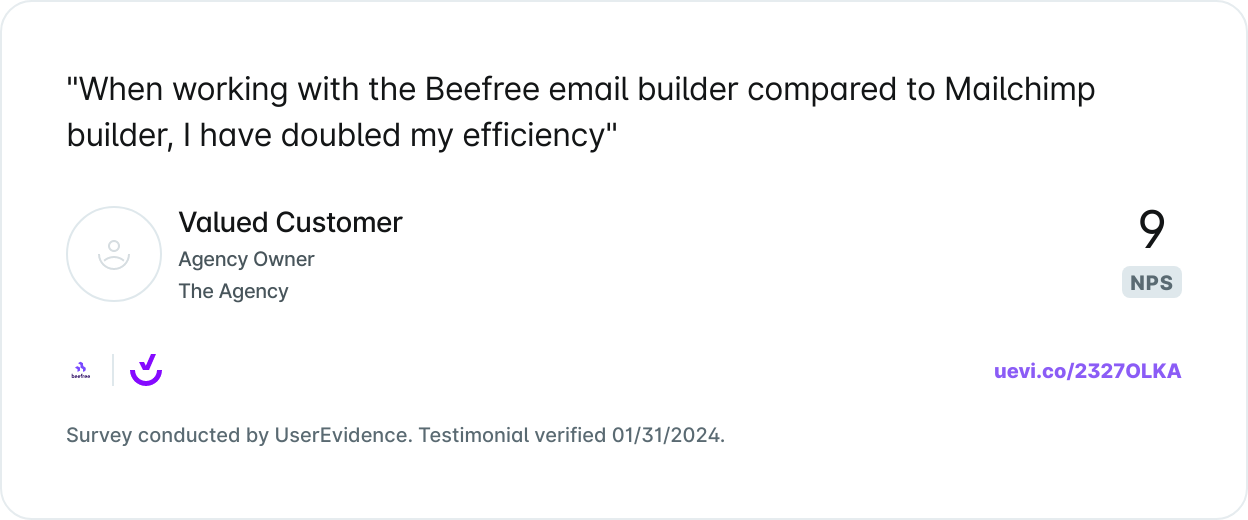It’s no secret that alumni engagement is crucial to higher ed. Former students who feel connected with their alma mater attend more events, engage more with current students and donate more often. Alumni newsletters are a great way to add communication touch points throughout the year.With graduated students being scattered across demographics, email is one of the most effective ways to stay in touch with alum. Alumni newsletters open rates sit at about 25.8% compared to the 21.3% average across all industries. And with an average ROI of $42 for every $1 spent, email remains one of the most cost-effective marketing strategies for higher education institutions.Newsletters also provide versatility, allowing you to raise awareness about your next fundraising initiative, tell success stories, and keep former students informed about alumni association events.Check out some newsletter strategies and content ideas for inspiration to advance alumni engagement at your university.
8 Best Practices for Crafting Alumni Newsletters
Developing a clear content strategy is key to keeping alumni engaged. There aren’t any one-size-fits-all approaches to designing high-converting alumni newsletters for your university. But, there are key best practices that will help. Create better alumni newsletters using these 8 tips.
Establish your workflow
The first step in any strong content workflow is user research. Take time to build a relationship with your alumni before creating an alumni newsletter. Reach out to alumni through LinkedIn, other social media platforms or by attending alumni events. Use these interactions to guide the content, style and cadence of your newsletter.The second step is to establish a purpose for your newsletter. Ask yourself these questions before sending your email:
- What is the purpose of the message you’re sending?
- Why is this message important for alumni to know?
- How are you going to measure the success of this message?
Your third step is to create a visually-engaging newsletter. Create an alumni newsletter from scratch or choose from this collection to help you get started.Finally, test your content and reach out to alumni for feedback. Review open rates, click-through rates and conversions from each message. This will shed light on what’s serving your community best. Repeat this four step process until you find what’s most engaging to your alum.
Pinpoint your KPIs
Set your KPIs by looking at the objective behind your alumni newsletter. Rather than trying to maximize all metrics, measure outcomes by associating a specific KPI with the unique objective of each email.For example, if you are looking to raise awareness through your newsletter, open rates would be a solid indicator of that success. Meanwhile, if you’re aiming to simply attract more alum to an event, click-through rates are a better measurement. Establishing a KPI before sending your email will give you clarity on which elements to optimize.
Find your cadence
How many emails should you send to alumni each month? Reports indicate that the typical relationship-based organizations send an average of 16 emails per month. But when it comes to the higher education industry, universities are only sending about 7.4 emails each month.The problem is that creating extensive email marketing campaigns is expensive, time-consuming and demands the luxury of additional resources that many organizations don’t have.The number of emails sent each month depends on your budget and your team’s bandwidth. Using cost-effective tools like BEE Pro cuts down on the amount of time and effort it takes to craft an email.
Personalize your outreach
Segmenting your audience is the best way to personalize your alumni newsletter.Segment by breaking down your alumni group into various subsections to cater to each section’s specific needs. You can segment your email list based on geographic location, age, occupation, major and other fitting criteria to increase engagement.Useful data to gather includes:
- Where do your alumni live - what country, city and state?
- What year did they graduate?
- Which sports do they keep up with? What was their major?
Alumni will read newsletters that touch on their interests. For example, creating a campaign for younger crowds should contain more social media related links or podcasts while older alumni prefer more short and feature stories. Personalization builds that connection through care, concern and understanding of their interests.
Refresh your email list
If you find that you haven't heard back from many alumni regarding your newsletter, it’s possible that they aren’t receiving your email. The contact info you received from alumni years ago is likely to have changed. If you initiate a re-engagement campaign and still don’t hear back from them, it’s best practice to delete alumni that did not respond.Keep in mind that if you continue to send your alumni newsletter to those that are uninterested, you run the risk of hitting their spam boxes. This goes for all alumni on your list. Cleaning your email list will help you reach your active members and avoid spam.Continuously look for opportunities to retrieve this updated contact info from alumni through outreach on social media, virtual alumni webinars and in-person events. For example, start an alumni happy-hour event once a month or a virtual comedy show fundraiser and collect updated emails.
Optimize email design
Mobile optimization is a crucial part of your strategy to increase engagement with your alumni newsletter template. Alumni have different personal and professional lives which makes it difficult to determine the best way to reach everyone. Luckily, with tools like BEE Pro, you guarantee to reach them in the most optimized way on both desktop and mobile.
Display clear CTAs
Along with helpful links and resources, be sure to include one clear CTA. Reports show that emails with a single call-to-action increased clicks by 371%.When it comes to CTAs, these are best practices to increase click-through rates include:
- Use a CTA color that fits your brand while also allowing it to stand out amongst the rest of the newsletter content.
- Avoid too many distractions and use imagery to guide alumni towards the CTA. Alumni will be drawn to different sections of the newsletter based on their preferences, so one clear CTA is best.
Your CTA will provide feedback on whether your content resonated with alumni by measuring click-through rates. Their click means they’re interested, so be sure to refresh your content if click-through rates are low.
Provide value
Test and evaluate your newsletter content to determine what’s intriguing to alumni. What content are they gravitating towards? Gather the feedback you receive and reframe areas of the newsletter that aren't receiving any engagement or providing value.Alumni-centric content brings value to your newsletter and will show that your intentions are genuine. You will know alumni are finding the content valuable not only by metrics, but also through their email replies.
Content Ideas for your Alumni Newsletter
Fresh content and a perfect strategy are the key to a successful alumni newsletter. Your end goal should be to make your alumni feel valued and appreciated. Highlight your school’s success through acknowledging and thanking alumni for their support. Engage with your alumni through some of these thoughtful content ideas:
Newsletter introduction
The introduction of your alumni newsletter is the most important part of your newsletter. This is where you reel in your alumni with intriguing content. Some ideas for a great alumni newsletter intro include:
- School’s mission - Genuinely talk about your school’s ambitions, purpose and values. Discuss a vision that alumni will resonate with. For example, if you are a welcoming, inclusive school, make sure that alumni feel that.
- Stories alumni might find interesting - This should play off your mission statement. What were some values or purposes that you can draw a story out of? Are there exciting changes taking place at your school? Craft a story that emotionally engages alumni.
- Timely topic - Introduce alumni to relevant or useful information that encourages them to engage. This type of intro discusses any current exciting or moving stories.
- Message from administration - Alumni appreciate when higher ed officials take time to engage with them and their students. A personalized message providing insight, exciting news, or interesting facts would be a great start to your newsletter.
Alumni stories
Showcase your alumnus’ successes. Your newsletter should feature alumni success stories to capture where alumni are now and what they’ve accomplished after attending your school. Not only are these alumni stories inspiring and exciting to read, they are also expressing your care for their professional and personal successes. Conduct interviews to provide in-depth personal stories and implement some of these ideas:
- Alumni of the month - Feature a couple alumni each month with exciting facts or stories about where they are now. Talk about how they are still engaging with your school to excite other alumni to do the same.
- Awards - Share alumni wins. Capture pictures and express praise for alumni that have received accolades in their personal or professional lives.
- In the news - Be on the lookout for alumni that are featured in the local or national news. Oftentimes alumni in the news may mention their alma mater, which is important to acknowledge and be grateful for. Alumni are always looking for networking opportunities or a chance to boast about their alma mater.
- Networking - Sharing where alumni are now and what they have accomplished can help open doors for each other. Creating a connected community will encourage alumni to reach out to one another.
Catch up with classmates
Although professional networking is important, many alum (especially young graduates) feel connected to their school on a personal level. Help them keep in touch with their classmates by including more personal stories in the alumni newsletter. Use some of these ideas in your newsletter:
- Feature story - Conduct an in-depth interview with alumni that are willing to share where they are now, both personally and professionally. Reading stories about someone’s journey to finding happiness and success post graduation are intriguing and inspiring.
- Short stories - Similar to the feature stories, provide a shorter story covering a couple alumni that went down different paths. Choose a theme for these stories such as “travel stories” or “overcoming adversity”. Or even explore niche topics that your alumni community might care to learn and hear more about.
- 10 questions - A short and sweet version of short stories. Interview alumni with a quick 10 questions. Pull information and ask questions that stray from the typical topics alumni get asked: How do you spend your weekends? What podcasts do you find inspiring? Do research beforehand to find topics that resonate with that alum personally.
Alumni advice column
Current students and alumni love to take advantage of networking opportunities and chances to connect. But many alumni can’t make it to in-person events due to their busy schedules. This is where alumni advice in your newsletter comes in:
- Alumni advice column - Contact alumni to ask for a quote on certain topics that may be related to your school, their personal experiences, their professional experiences or niche fun facts that would be fun to include.
- Finding your path tips - Alumni, both young and old, travel on different paths. Some might make a career switch at an older age while others might make several switches throughout their career. This section is useful to interview and gain insight from alumni that have traveled down different roads.
- Training Sessions - Offering virtual or in-person training sessions from one alumni professional to the next is a great way to gain insight on things many may not know and would care to learn more about.
Faculty features
Express appreciation for those that work for your school. Alumni get excited to hear about the individuals that made their university experience so great. Many alumni pass through school without meeting many of these faculty members, so it’s great to share their impactful stories and how they contribute to your school’s mission. Implement these ideas into your newsletter:
- Inspiring faculty story - Interview faculty that have made a great impact on students. Many alumni will resonate and get excited about seeing these faculty members being recognized through a story.
- Recognition - Boast about your faculties wins in this section. What are they working on inside and outside of university that should be acknowledged?
- 10 questions (faculty edition) - Find the faculty members that are remembered by alumni for their quirks, supportive nature and other inside information that would be interesting to hear about. There are so many faculty members that have distinct personalities that will be remembered by alumni forever. Do some research and digging to find these extraordinary members.
Alumni engagement
Portraying that alumni are engaging with their school is a great way to reel more of them in. Create exciting events, offer fundraising opportunities and share the excitement through pictures. These ideas all lead to more personalized engagement, which is what is needed to provide true value through your alumni newsletter. Alumni want to see and feel like they are cared for post graduation, and these are great ways to express that. Try these alumni engagement ideas:
- Social snapshot - Include pictures of alumni on your social media platforms. This will encourage more alumni to get involved while also providing them with the opportunity to share pictures to reach and engage other alumni.
- Events - Share pictures from past alumni events to encourage alumni to get involved. Also take this space to talk about upcoming event info. Share quotes and fun excerpts from alumni that have attended and enjoyed specific events.
- Giving - Recognize donors, promote fundraising events and express certain incentives or recognitions received by alumni for giving back to your school.
Closing thoughts
Close out your newsletters on a personal note. Include a story, quote or thank you note from someone alumni are familiar with. Be sure to include these elements in your closer:
- Picture - Place a short bio picture of the individual signing the newsletter. This will put a face to the name and create more of a genuine connection with alumni.
- Name of sender - Include a real name in the send-off and not just a common one. “Alumni Association” is not as warm and personal as someone’s actual name.
- Signature - Provide a written signature on every newsletter. This is a more thoughtful approach. It shows you care for alumni and that you put genuine effort into your newsletter.
- Unsubscribe option - Ensure that subscribers can opt-out of your newsletter. Providing autonomy to your subscribers builds trust, stays in line with GDPR privacy terms and helps your newsletter avoid the spam filter. Respect their rights to security and provide them with the option to come or go as they please.
Now that you have an overview of newsletter best practices, it’s time to customize your approach. There are many opportunities to keep alumni engaged, find what works best for your community.
Design with BEE Pro
Create your engaging alumni newsletter in BEE Pro, the best, mobile-responsive drag and drop editor. We’re trusted and used by 15 of the top 50 universities from the US News & World Report, including Harvard, Northwestern, Vanderbilt, Cornell and USC. With hundreds of templates to choose from including an education template collection and features like brand kits, even the smallest departments can design an email in minutes.

